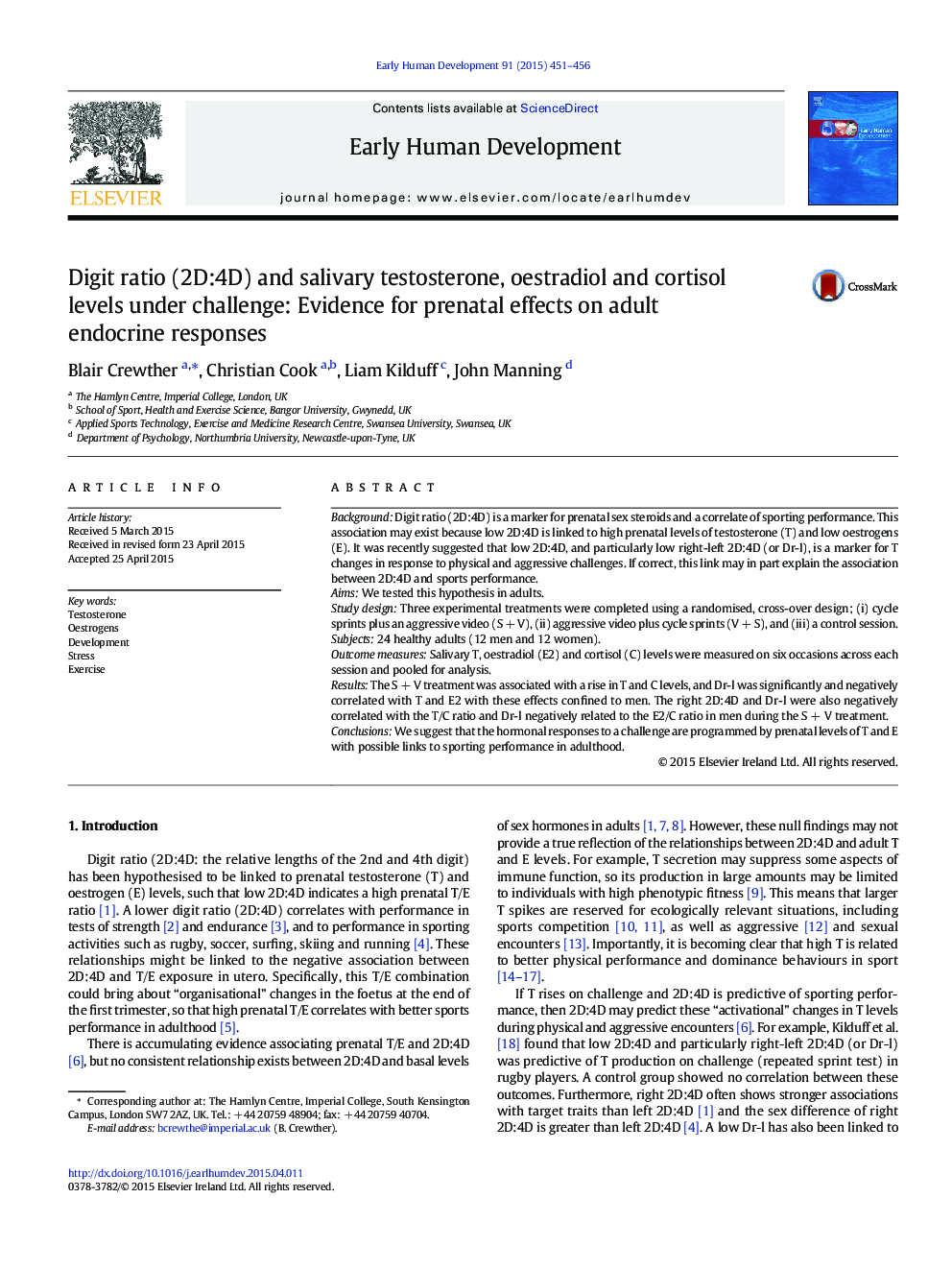| Article ID | Journal | Published Year | Pages | File Type |
|---|---|---|---|---|
| 3916402 | Early Human Development | 2015 | 6 Pages |
•Prenatal levels of T and E (2D:4D ratio) are linked to sporting performance in adulthood.•Adult hormone responses to a challenge were associated with 2D:4D variables, but only in men.•Hormone reactivity and sports performance could be programmed by prenatal hormone exposure.
BackgroundDigit ratio (2D:4D) is a marker for prenatal sex steroids and a correlate of sporting performance. This association may exist because low 2D:4D is linked to high prenatal levels of testosterone (T) and low oestrogens (E). It was recently suggested that low 2D:4D, and particularly low right-left 2D:4D (or Dr-l), is a marker for T changes in response to physical and aggressive challenges. If correct, this link may in part explain the association between 2D:4D and sports performance.AimsWe tested this hypothesis in adults.Study designThree experimental treatments were completed using a randomised, cross-over design; (i) cycle sprints plus an aggressive video (S + V), (ii) aggressive video plus cycle sprints (V + S), and (iii) a control session.Subjects24 healthy adults (12 men and 12 women).Outcome measuresSalivary T, oestradiol (E2) and cortisol (C) levels were measured on six occasions across each session and pooled for analysis.ResultsThe S + V treatment was associated with a rise in T and C levels, and Dr-l was significantly and negatively correlated with T and E2 with these effects confined to men. The right 2D:4D and Dr-l were also negatively correlated with the T/C ratio and Dr-l negatively related to the E2/C ratio in men during the S + V treatment.ConclusionsWe suggest that the hormonal responses to a challenge are programmed by prenatal levels of T and E with possible links to sporting performance in adulthood.
